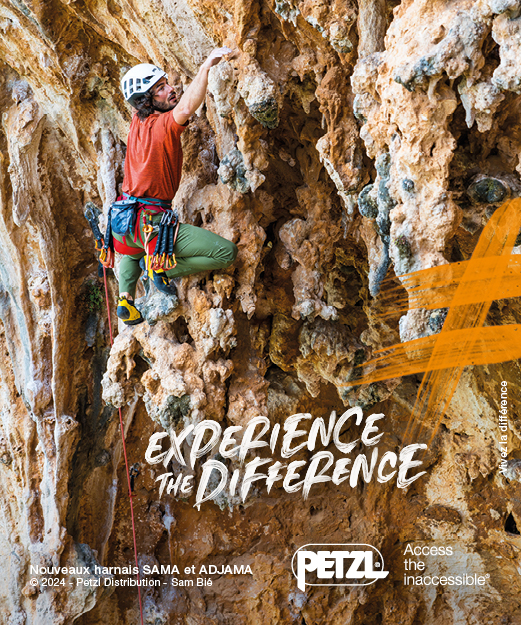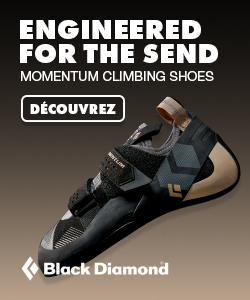Epicondylitis and climbing : New treatment possibilities
Lateral epicondylitis is the most common elbow pathology. Usually called tennis elbow, it nevertheless affects many climbers. Even if they’ve never lifted a racquet! Good news : there are new treatment possibilities.
Epicondylitis : a pathology caused by overwork
Lateral epicondylitis is a pathology that is caused by the repetition of certain movements. Or excessive demands on the wrist extensor muscles. Very often, an imbalance in the development of the flexor and extensor muscles encourages these tendon-related pathologies. In particular in climbers whose flexors are over-developed. The extensors stabilise the wrist when you grip, and optimise the work of the flexors.
It occurs most frequently between 30 and 40 years old. And it affects mostly men. It lasts for anything between 6 months and 2 years. Often the root of the problem is insufficient warming up and a sudden increase in the quantity of training (sessions that are too close together, starting back at intensive training, working with weights…). It can also be due to insufficient hydration. Or untreated dental cavities or even cervical or dorsal tension.
![]()
Repeated violent gestures at speed or at a stretch, such as in bouldering or on a fingerboard, also have a detrimental effect on elbows. Especially if the climber is lacking in coordination and isn’t in good enough physical shape when they start this kind of exercise. Those who climb cracks also develop this type of elbow pathology, because of the twisting movements their joints are subjected to, such as hand jams with the thumb pointing downwards.
Classic symptoms and treatments
Lateral epicondylitis is quite easy to spot. As its name suggests, it causes pain in the epicondyle. I.e. a little bony bump at the elbow joint, on the outside of the arm. Usually it comes on gradually. The area becomes sensitive to touch at first, then painful during physical activity, whether for rotating movements or gripping movements with a straight arm. And sometimes even at rest, just by straightening the elbow!
It may also present in the form of persistent contractions of the extensors, with tightness in the forearm. This can be one of the first warning signs. Stopping or greatly reducing training, cryotherapy, ultrasounds, deep transversal massage, antalgic electrotherapy and stretching exercices are part of the armada of treatments that are used to begin with. They usually improve the situation. But won’t manage to profoundly alter the histological structure of the tendon.
Because it seems that the pain isn’t due to an inflammation, but rather to the development of immature scar tissue, with collagen fibres that are broken up by angio- and myo-fibroblastic nodules, along with neo-vessels and sensitive nervous fibres. In other words, after the repeated micro-traumas during physical activity, the tendon begins to repair itself as well as it can, but it’s fairly disorganised!
Eccentric movement
There is no real consensus at present when it comes to treating lateral epicondylitis. However different studies have shown that eccentric movement can be effective when dealing with tendon-related pathologies, which explains why many physiotherapists are now using it, even though the researchers are not unanimous on the reasons behind its effectiveness.
Eccentric movement is movement with loads that are 100% more than the weight required to carry out MR (maximum repetition). Loads that are under 100% are referred to as negative dynamic movement, braking movement, or sub-maximal eccentric movement. Eccentric movement is a controlled elongation of the target muscle, involving stretching the muscular insertions or opening up the angle of the sections concerned. This is called the negative phase of the movement (the positive phase being concentric).
W. Stanish was the first scientist to stress the role of eccentric exercises in treating chronic tendonitis. This was in 1986. Subsequently, the Swedish researcher Hakan Alfredson showed that eccentric loads were beneficial in that they helped break up the adhesion of disorganised scar tissue, along with the abnormal blood vessels and nerve endings that were present in affected tendons.
According to a study by Liège university in 2005, this tendon pathology develops “due to an imbalance in the demands placed on the tendon, and its capacity to repair itself. This theory requires the tendon tissue to adapt in order to protect itself and reduce the often repetitive nature of the pathology”. Hence the benefits of using a suitable eccentric programme along with the more classic techniques.
Eccentric protocol for epicondylitis
Whatever the underlying cause, these days eccentric effort is considered the most appropriate treatment for recovering elbow function and preventing recurrence. Because it enables both a reduction in pain transmission, and an increase in collagen production. However, it must be done intelligently!
Muscle reinforcement must be done carefully and very gradually, ideally under the watchful eye of a physiotherapist who can ensure that you are performing the movements correctly. And help you choose an appropriate weight load. Establishing an eccentric protocol for muscle strengthening can only be considered after a substantial period of inactivity, in terms of therapy.
In practice
For muscle work to be beneficial, you should only carry out the negative phase of the movement. And use the other hand to carry out the concentric phase. In other wards, the return movement is passive. The exercise consists of resisting progressively heavier weights. 1 to 2kg depending on your level of strength and your progress.
In concrete terms, you can use a barbell, with your elbow placed on your leg or on a flat surface (a table for example), with your pronated hand extended over the void. The wrist is resting on the knee or the edge of the table. Gradually and slowly let the wrist drop while resisting the weight, and controlling the descent. The other hand then lifts the weight back up.
You will experience muscle fatigue in the extensors and a slight pain at the end of each series (on the last 3 repetitions). Stanish recommends 3 series of 10 to 15 repetitions (2 series of 10 at the beginning of the treatment). Throughout the treatment, any progression must be gradual. A significant period of rest must be observed between series, perhaps with some passive stretching for 30 seconds or so. Five minutes of cryotherapy can sometimes be used to reduce pain. 3 sessions per week, over a period of 9 weeks, should bring about an improvement.
Source
Stanish W, Rubinovich RM, Curwin S. Eccentric exercise in chronic tendonitis. Clin Orthop Rel Res 1986; 208:65-8.









Un top compromis aux haltères pour le travail en excentrique et spécial “epicondylite” dixit un sujet qui est passée par le PRP (et batteur de surcroît lol-mais blog et lien suivants à prendre très au sérieux et surtout, bien checker les liens référencés notamment celui du NYTimes+lien “amazon” pour la fameuse “barre rouge/thera-band”) :https://www.youtube.com/watch?v=doxw9f_BzCI
Perso, ça me permet de grimper en sachant que ce genre de traumatisme ne disparaît jamais vraiment, ultra efficace !!
autre lien pour bien réaliser le mouvement avec la thera-band :https://www.youtube.com/watch?v=we4UoiKG3Co&t=319s
Thanks for this article. A video showing the exercise would be nice. It is difficult to understand the exact form as it is!
Par contre Stanish est complètement dépassé comme protocole, ne parlez pas de “nouveaux traitements” en référençant un article de 1986. Il vaut mieux faire de l’isométrique en course moyenne a haute intensité pour démarrer la rééducation et introduire progressivement des mouvements explosifs d’extension de poignet. L’excentrique ne chargera pas autant l’enthèse que ce qu’elle subira pendant la grimpe.